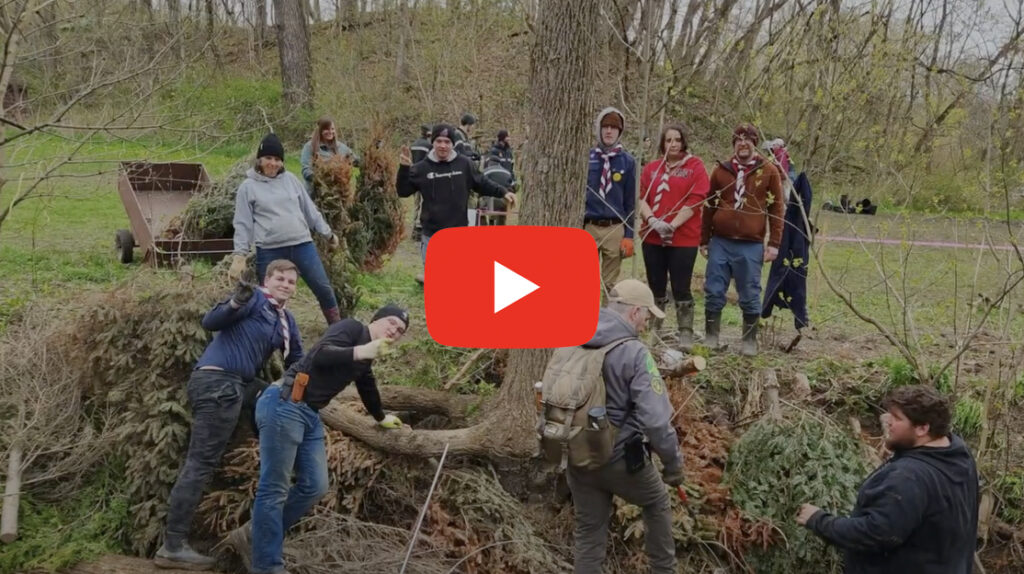A Healthy Future
Scouts Canada
When over 500 Scouts, Guides, Cadets and leaders gathered at Camp Westaskiwin on the outskirts of St. Catharines on a cold and wet weekend in April, they stayed warm because they worked hard and because they knew they were helping to make a sensitive watershed healthy for generations to come.
A $30,000 Environmental Grant from Niagara Community Foundation meant Scouts Canada could plant thousands of trees, shrubs, and grasses in a project that will reduce flooding, curtail erosion, and restore native species to a landscape harmed by generations of human activity.
And for Bryce Honsinger, Troop Scouter of the 57th Grantham Optimist Scout Troop and one of the organizers of the event, it’s not just the improved environment for the Twelve Mile Creek watershed that was planted that day.
Youth from across Niagara and beyond, ranging in age from 6 to 18, formed friendships, learned important environmental lessons, and invested in making their futures healthier and safer. Providing opportunities for young people to connect with each other and connect with nature is what will make Niagara continue to be a healthy and caring community, Honsinger said. “If we want the environment to be in good shape, we have to have practices that are sustainable.” Getting the youth involved is “a systemic way to make a good ecological impact,” he said. “Let’s get stakeholders out here who use the camp and get them invested in the project. That’s a big part of Scouting—we want kids to be safe, but we want them outside and we want them engaged.”
Before the planting day even began, ecological assessments were conducted and many hours were spent removing invasive species such as multiflora roses and buckthorn. Hundreds of Christmas trees were gathered to serve as buffers against bank erosion. Shading the creek and slowing the water down will eventually help restore water quality so aquatic life can thrive once again. NCF Grant funding was instrumental in securing the equipment to anchor Christmas trees and improve habitat on 126 m of creek bank.
If we want the environment to be in good shape, we have to have practices that are sustainable.
Bryce Honsinger,
Troop Scouter
“If we come together as a community, anything is possible,” Honsinger said.
“We had a fantastic weekend,” said Scout Will Bigford. “Friendships were fostered, skills were learned, and memories were made—helping our favourite camp and its variety of ecosystems thrive.”
The Robson Family Fund started small and grew slowly, meant to benefit their community and inspire others to do the same, Kelly said. You don’t need to be wealthy. Just do what you can to make your community “a better place to live, work and play.” “The fund has given us the opportunity to support the charitable organizations we value, not only today but for the future of the community.”
NATIVE TREE SPECIES PLANTED AT CAMP WETASKIWIN
- Red Maple (Acer Rubrum)
- Red Oak (Quercus Rubra)
- Bur Oak
- Black Cherry (Prunus Serotina)
- Sugar Maple
- Pin Oak (Quercus Palustris)
- Shagbark Hickory (Carya Ovata)
- Tulip Tree (Liriodendron tulipifera)
- Larch
- White Pine
- White Spruce
- Red Pine


